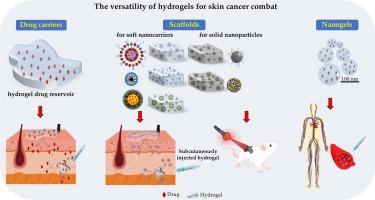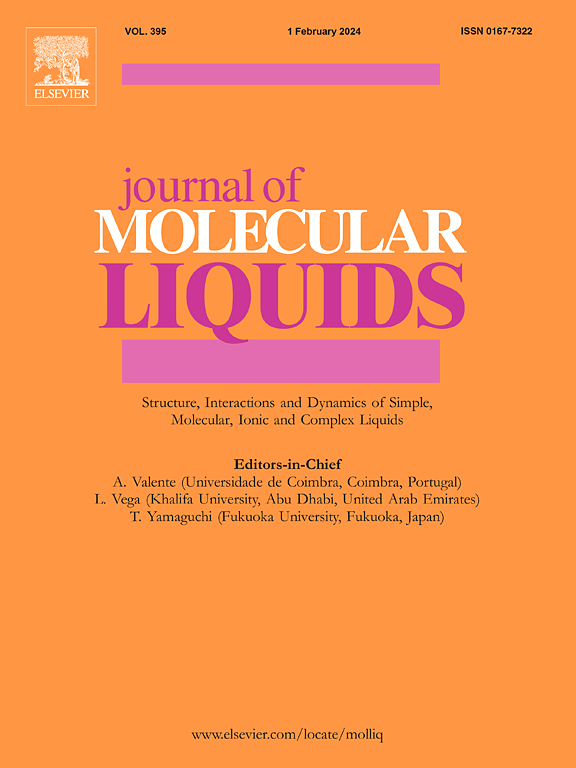Hydrogels as versatile colloidal platforms to combat skin cancer – Physicochemical features, strategies and advances
IF 5.2
2区 化学
Q2 CHEMISTRY, PHYSICAL
引用次数: 0
Abstract
The incidence of skin cancer is rising globally. Hydrogels are among the most extensively studied systems in the plight to combat this disease due to their unique features—such as versatility, biocompatibility, capacity for stimuli-responsiveness, common non-invasiveness, photodynamic therapy capability, and ability to contain smaller delivery structures embedded—and their potential for continuous enhancement. Herein, we review the major strategies and findings concerning the development of hydrogel-based colloidal systems for skin cancer treatment, dividing the literature into three main areas: hydrogels as direct drug delivery systems; hydrogels as scaffolds for drug-loaded nanostructures and sensitizers; and hydrogels in the form of nanogels. Hydrogels have been employed as slow-release drug reservoirs, which can be administered topically or injected directly into the tumor mass, yielding potent anticancer effects. Hydrogel scaffolds embedded with drug-loaded nanostructures—encompassing vesicles, micelles, emulsions or nanocapsules—have emerged as hybrid systems that significantly enhance bioavailability at the tumor site, demonstrating high efficacy against skin cancer. Additionally, solid nanoparticles benefit greatly from the hydrogel network, which serves not only as a scaffold to enhance photothermal therapy but also as a bioactive compound, promoting cancer cell death and wound healing. Finally, nanogels are highly adaptable and effective systems against metastization as they can be administered intravenously. We conclude by presenting perspectives on future directions in this field and challenges yet to be addressed.

水凝胶作为抗击皮肤癌的多功能胶体平台--物理化学特征、策略和进展
全球皮肤癌发病率不断上升。水凝胶因其独特的特性--如多功能性、生物相容性、刺激反应能力、常见的无创伤性、光动力治疗能力和嵌入较小输送结构的能力--及其持续增强的潜力,成为抗击这种疾病的研究最广泛的系统之一。在此,我们回顾了有关开发用于皮肤癌治疗的水凝胶胶体系统的主要策略和研究成果,并将文献分为三个主要领域:作为直接给药系统的水凝胶;作为载药纳米结构和敏化剂支架的水凝胶;以及纳米凝胶形式的水凝胶。水凝胶已被用作缓释药物储库,可局部给药或直接注射到肿瘤组织中,产生强大的抗癌效果。水凝胶支架嵌入了载药纳米结构--包括囊泡、胶束、乳液或纳米胶囊--已成为一种混合系统,可显著提高肿瘤部位的生物利用度,对皮肤癌具有很高的疗效。此外,固体纳米粒子从水凝胶网络中获益匪浅,因为水凝胶网络不仅是加强光热疗法的支架,还是一种生物活性化合物,可促进癌细胞死亡和伤口愈合。最后,纳米凝胶具有很强的适应性,可以静脉注射,是一种有效的抗变态反应系统。最后,我们对这一领域的未来发展方向和有待解决的挑战进行了展望。
本文章由计算机程序翻译,如有差异,请以英文原文为准。
求助全文
约1分钟内获得全文
求助全文
来源期刊

Journal of Molecular Liquids
化学-物理:原子、分子和化学物理
CiteScore
10.30
自引率
16.70%
发文量
2597
审稿时长
78 days
期刊介绍:
The journal includes papers in the following areas:
– Simple organic liquids and mixtures
– Ionic liquids
– Surfactant solutions (including micelles and vesicles) and liquid interfaces
– Colloidal solutions and nanoparticles
– Thermotropic and lyotropic liquid crystals
– Ferrofluids
– Water, aqueous solutions and other hydrogen-bonded liquids
– Lubricants, polymer solutions and melts
– Molten metals and salts
– Phase transitions and critical phenomena in liquids and confined fluids
– Self assembly in complex liquids.– Biomolecules in solution
The emphasis is on the molecular (or microscopic) understanding of particular liquids or liquid systems, especially concerning structure, dynamics and intermolecular forces. The experimental techniques used may include:
– Conventional spectroscopy (mid-IR and far-IR, Raman, NMR, etc.)
– Non-linear optics and time resolved spectroscopy (psec, fsec, asec, ISRS, etc.)
– Light scattering (Rayleigh, Brillouin, PCS, etc.)
– Dielectric relaxation
– X-ray and neutron scattering and diffraction.
Experimental studies, computer simulations (MD or MC) and analytical theory will be considered for publication; papers just reporting experimental results that do not contribute to the understanding of the fundamentals of molecular and ionic liquids will not be accepted. Only papers of a non-routine nature and advancing the field will be considered for publication.
 求助内容:
求助内容: 应助结果提醒方式:
应助结果提醒方式:


